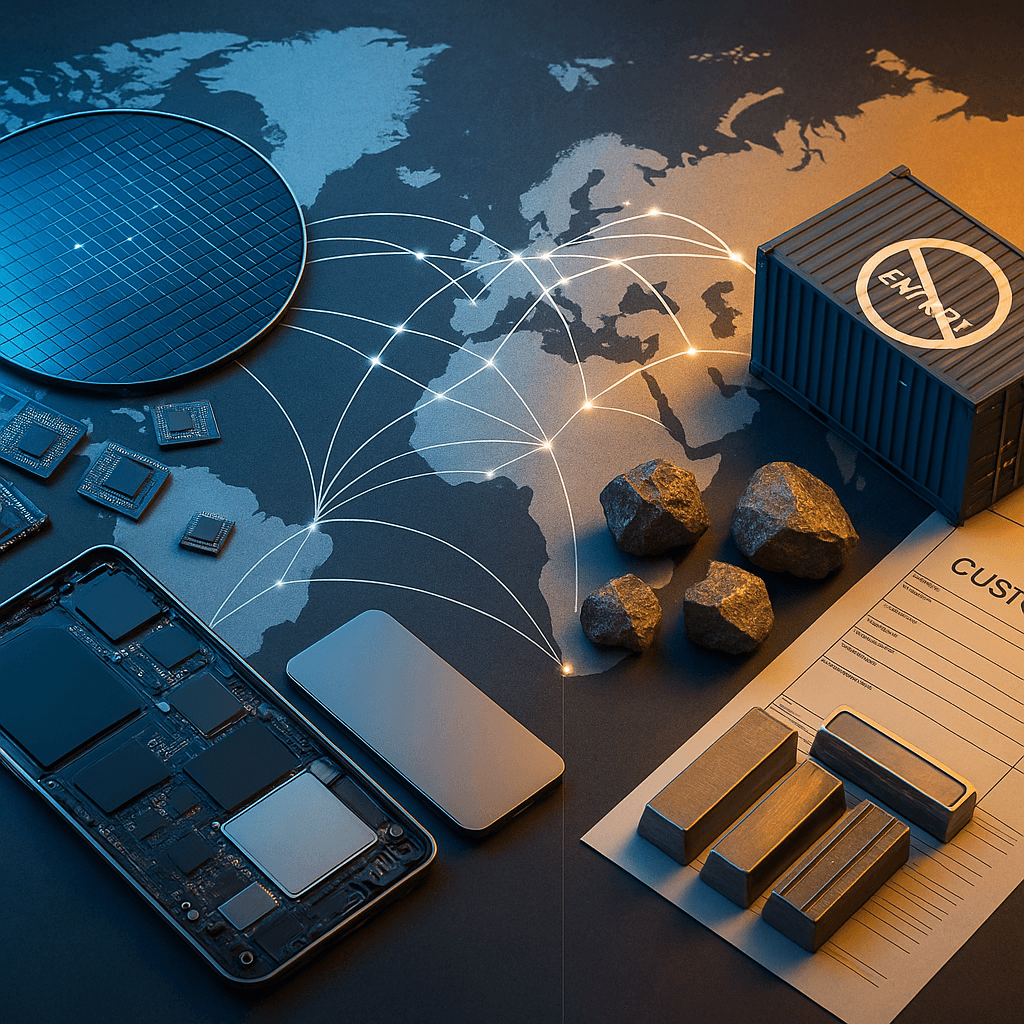China just escalated the global semiconductor trade war. The country's Commerce Ministry added five more rare earth elements to its export control list Thursday, bringing the total to 12 minerals that now require special licenses for export. The move directly targets the chip industry's supply chain as Beijing retaliates against US tech restrictions.
China just threw another wrench into the global semiconductor supply chain. The world's dominant rare earth producer expanded its export control list Thursday, adding five critical minerals that power everything from smartphones to fighter jets. The move puts Apple, Nvidia, and other chip-dependent companies on notice that their supply chains just got more complicated. The Commerce Ministry's announcement brings China's total controlled rare earth elements to 12, all now requiring special export licenses that the government can approve or deny at will. The ministry made clear this isn't just about trade - it's about "safeguarding national security" in an escalating tech cold war with Washington. Foreign producers will now need Chinese government permission to export any products containing even trace amounts of Chinese-origin rare earth minerals. That's a massive expansion of Beijing's leverage, considering these elements are essential for manufacturing semiconductors, electric vehicle batteries, and renewable energy systems. The licensing requirements get particularly strict for defense applications, which will be flatly denied export permits. Semiconductor companies face individual case-by-case reviews, meaning Intel, AMD, and Taiwan Semiconductor could find themselves at the mercy of Chinese bureaucrats for critical materials. The timing isn't coincidental. China's latest restrictions directly mirror the Biden administration's expanded Foreign Direct Product rule, which has steadily tightened controls on chipmaking equipment exports to China since 2022. It's a tit-for-tat escalation that's reshaping global technology supply chains. Beijing first flexed its rare earth muscles in April, adding several minerals to export controls in response to Trump-era tariffs. That move sparked global shortages and sent commodity prices soaring, demonstrating just how vulnerable the world's tech infrastructure is to Chinese supply disruptions. China produces roughly 70% of the world's rare earth minerals and controls an even larger share of the refining capacity that turns raw materials into usable components. Elements like neodymium, dysprosium, and terbium might sound obscure, but they're absolutely critical for manufacturing the permanent magnets in electric motors, the phosphors in LED displays, and the specialized alloys in jet engines. The geographic concentration creates what industry analysts call a "single point of failure" for entire technology sectors. While companies like have been working to diversify their supply chains, alternative sources in Australia, Canada, and the US remain years away from meaningful production volumes. The new export controls also extend to mining and refining technology, making it harder for other countries to develop independent rare earth capabilities. That's particularly concerning for the Pentagon, which has identified rare earth dependence as a critical national security vulnerability. The restrictions include some humanitarian exemptions for public health emergencies and disaster relief, but those carve-outs do little to address the broader strategic implications. China's message is clear: if the US wants to restrict technology flows, Beijing can play the same game with the raw materials that make modern electronics possible. The escalation puts global tech companies in an impossible position. They need Chinese rare earths to manufacture products, but those same products increasingly face export restrictions if they're too advanced. It's a supply chain squeeze that's forcing painful choices about where to manufacture, what technologies to develop, and which markets to serve. Industry executives are now scrambling to map their rare earth dependencies and explore alternative suppliers, but the reality is that China's decades-long investment in rare earth production and processing gives it overwhelming leverage in this critical market.








